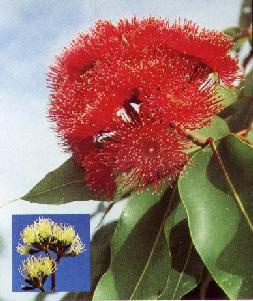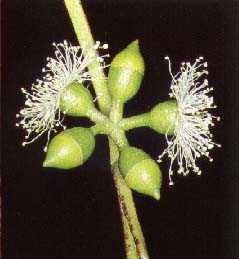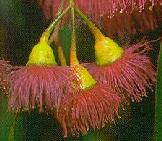|
Centre for Plant Biodiversity Research
A Gum Tree Guide
The southern continent boasts between 700 and 800 eucalypt species, and is known for them around the world. But how can you tell which one is which? The Centre for Plant Biodiversity Research (CPBR) is now developing the world's first comprehensive, computer guide to the identification of eucalypts. When finished, it will mean anyone can work out the name of a eucalypt species, quickly and simply, from almost any plant sample that has some leaves, flower buds or gum nuts.
Until now, eucalypts and other plants have been identified using "keys" in books which are largely designed for people familiar with botanical terms. A key works, like a questionnaire, by asking a user a series of "yes and no" questions about the features of the unknown plant until the name is determined by by a process of elimination. But book keys may be difficult to use. Users need to answer the right questions in the right order. For example, you might have a sample of a tree's leaves and flowers only, but the key might ask about its bark. Book keys also use many specialised botanical terms to describe plants, which can be confusing to non-scientists. This led to the development of EUCLID - a new way to identify eucalypts.
The Good Oil on EucalyptsCPBR researcher Ian Brooker and his team draw on the resources of the world's largest eucalypt collection, held at the Australian National Herbarium in Canberra. The Herbarium has 65,000 eucalypt specimens - some collected as long ago as 1770 by botanist Sir Joseph Banks - and is managed jointly by CSIRO Plant Industry and Environment Australia, Biodiversity Group through the Australian National Botanic. This collection provides the essential resource for the eucalypt research program, which has resulted in numerous scientific and semi-popular publications covering the whole genus Eucalyptus.
Australia's Growing FutureThe research program, including expertise from many years of eucalypt taxonomy, has provided the scientific basis tor the high quality data underlying "EUCLID" (short for EUCaLypt IDentification). EUCLID is a simple interactive computer package. It is designed to communicate information in an easily accessible form suitable for anyone from a novice to a specialist.People using EUCLID simply use features that are present on their plant sample. To identify trees, a user will consider any of the 115 different features in any order - if you don't know what a tree's flowers look like, the shape and colour of its leaves will help identify it. The habitat, such as river banks or sand dunes, may also help to identify the eucalypt. The first edition of EUCLID will be ready in 1997. This version will cover all 310 species of eucalypts found in New South Wales, Victoria, the Australian Capital Territory, Tasmania and south-eastern South Australia. EUCLID will be produced on CD-ROM and contain high quality, colour photographs.
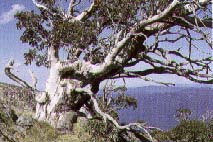
The researchers need to travel throughout Australia to study the plants in the field and to collect the necessary photographs and information. So that EUCLID reflects the field situation they have to visit every species in its natural environment, and note critical features as they are seen in naturally-growing plants. Besides being an easy identification tool, EUCLID will become an inventory of names, synonyms, characters, natural distribution and habitat preferences. In future it will also include information on usage.
CPBR researcher Ian Brooker: "People are always wanting to know about eucalypts. It's the one tree Australia is known for all over the world".
Centre for Plant Biodiversity Research Brochures and Leaflets Page
Updated 15 November, 2001 by Andrew Lyne |
